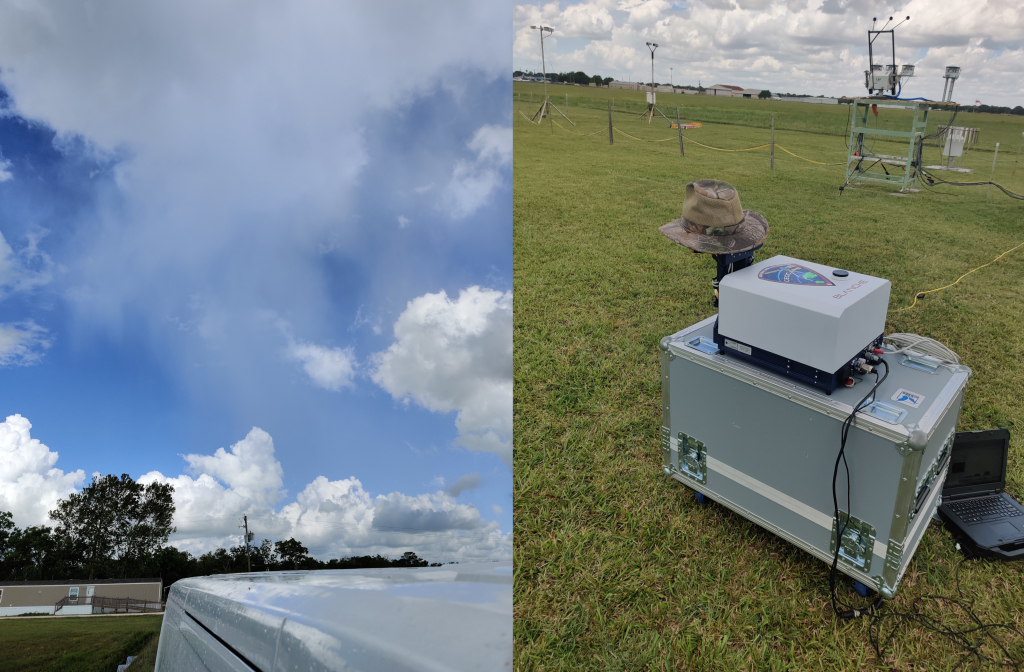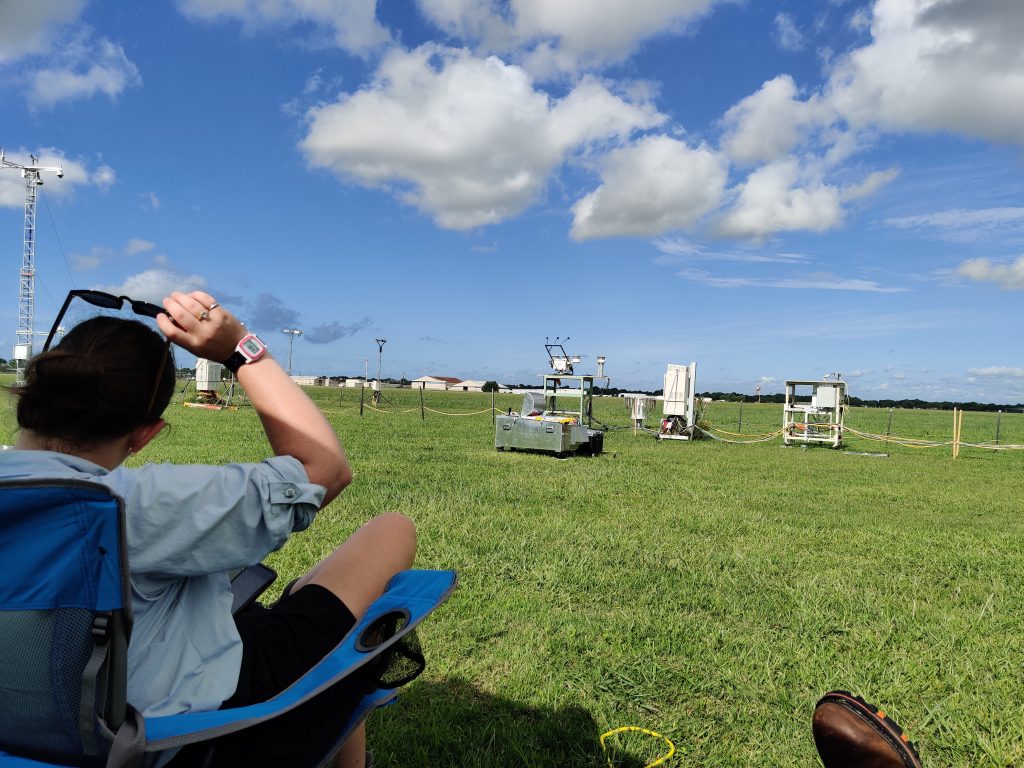GeoCarb Houston TRACER Campaign
As discussed in my previous post, the GeoCarb group deployed EM27/Sun instruments for the Houston TRACER campaign. The US Department of Energy (DOE) Atmospheric Radiation Measurement (ARM) program to measure the atmosphere above Houston, TX in summer 2022. The GeoCarb group deployed al summer, including two trips where I went. We were interested in studying the total column concentrations of carbon dioxide, carbon monoxide, and methane. Our EM27/Sun instrument measured these values from the surface while satellites with similar spectrometers passed above. Hopefully, the GeoCarb satellite will join them someday! On my second trip, my colleague Elizabeth Spicer joined me. She was the master’s student in charge of the EM27/Sun studies, so I should say I joined her instead.
Custom Enclosure
This time, we deployed Blanche the EM27/Sun in an aluminum enclosure instead of improvising one in the field. The new enclosure was designed based on previous research efforts. This new enclosure had a hefty air conditioner and insulated lining with a powered lid to keep out the rain. As I discussed previously, the biggest challenge during the Houston TRACER campaign was the heat and humidity. This design promised to correct it.
Sadly, the design given to us was for a project that worked well in what the German authors consider “warm”. It did very little in the urban swamp of Houston. We took to using damp towels for evaporative cooling to supplement the struggling air conditioner. When we returned home, we immediately modified the enclosure with a second air conditioner. This helped things somewhat, but it still was not enough. I have since designed a completely new EM27/Sun enclosure, but that was not finished in time for Houston.

Rain Rain Go Away
Another big challenge during the Houston TRACER campaign was the rain. Showers pop up without warning in Houston, lasting only moments before dispersing. This was unacceptable for us. The EM27/Sun CANNOT get wet due to the sensitive optics. At one point during my first deployment, a shower suddenly appeared upwind. Like a gentleman, I rushed to give Blanche my hat so she did not get wet. Thankfully, the new enclosure, while imperfect, kept things dry. The powered lid could be shut with the flick of a switch. This allowed Elizabeth and I to kick back and try not to die of heat exhaustion during the day. Oddly, I seem to be forever babysitting robots like this.

